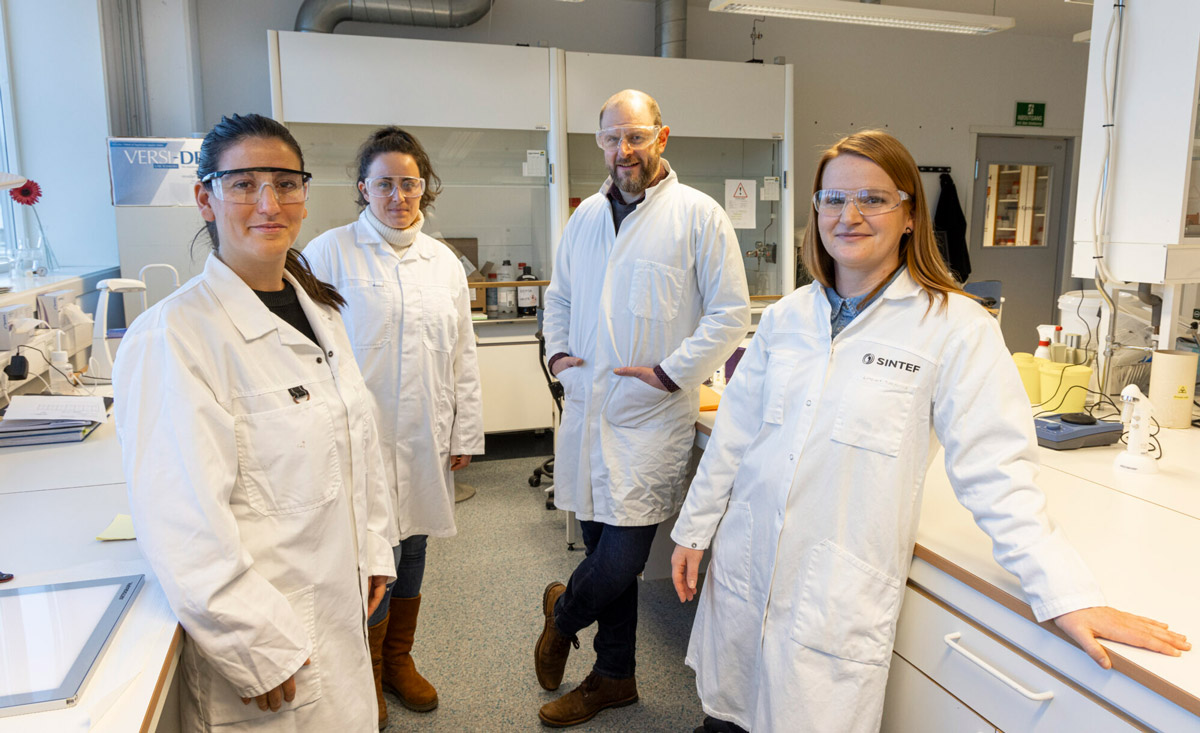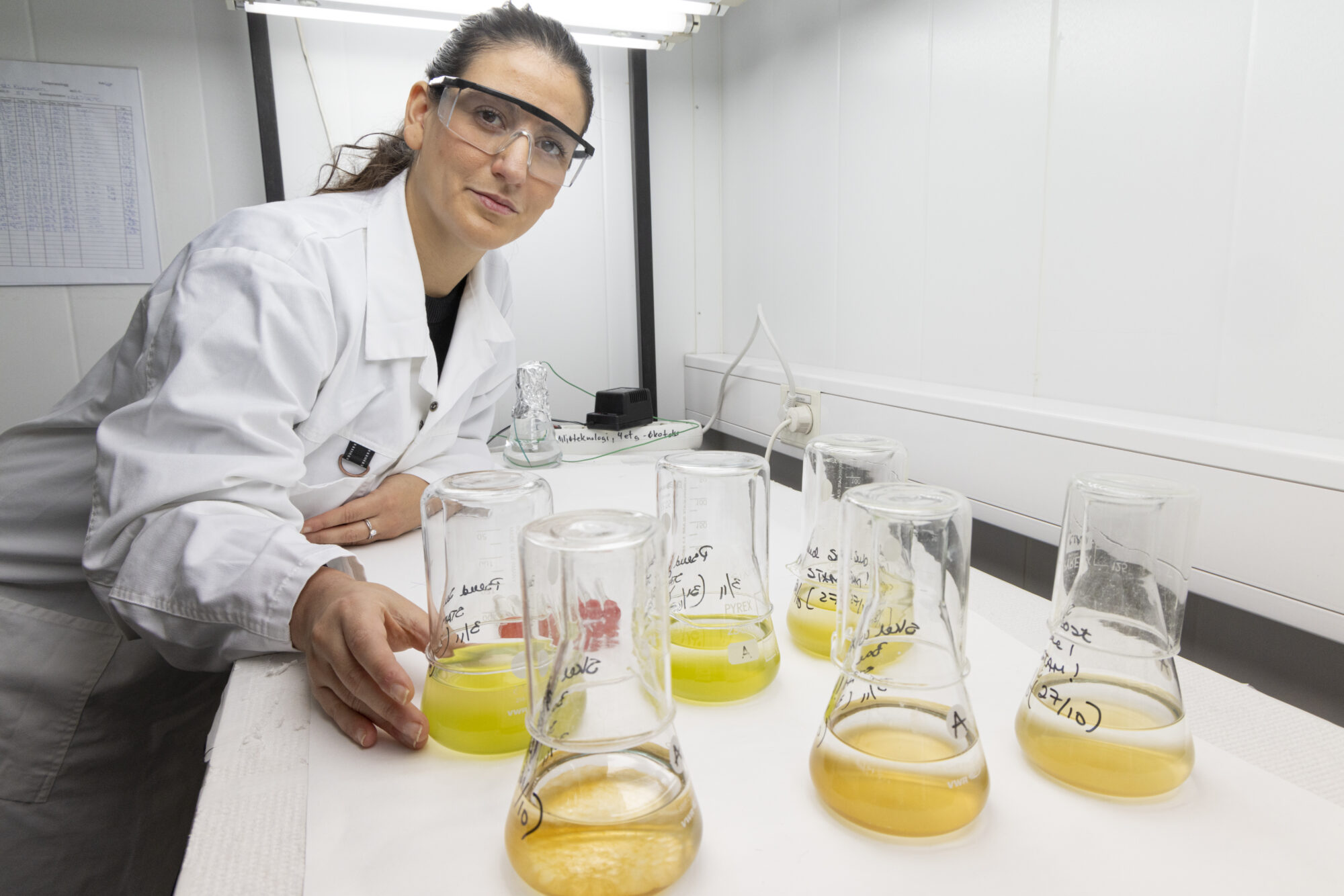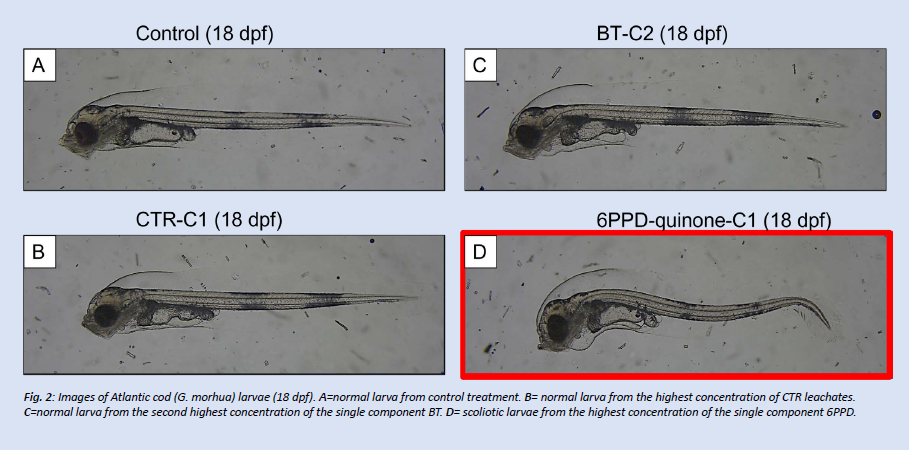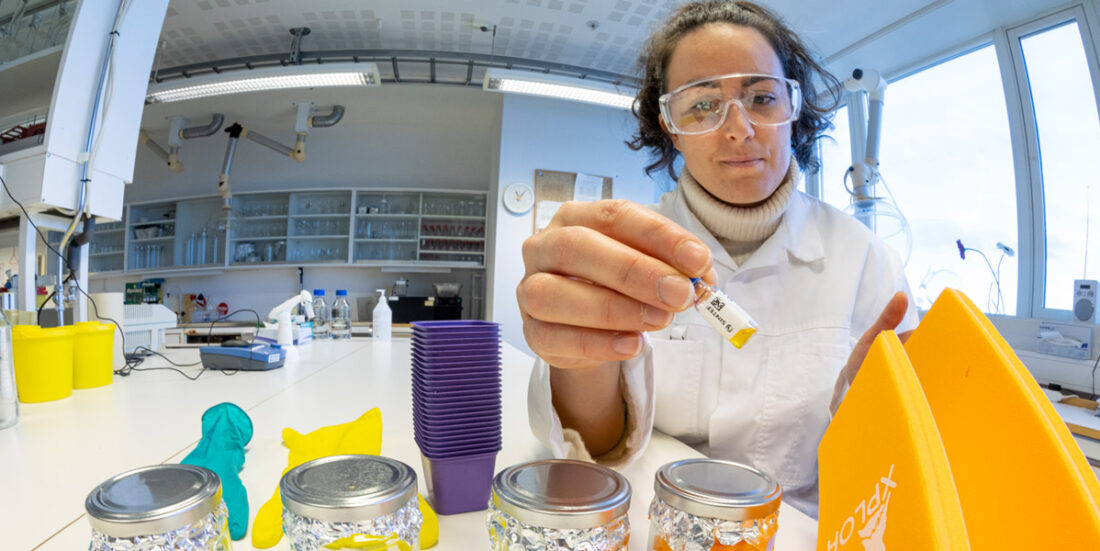Researchers surprised at levels of toxicity in standard plastic products
Tonnes of waste from standard plastic products have been uncontrollably released into the world’s oceans, where they gradually break down. But how harmful is this plastic to living organisms, and what is it in these plastics that is so damaging?
The plastic with which we surround ourselves contains a range of chemical additives that can leach out into water systems in the natural environment. This can happen both before and during the plastic degradation process. Even if it takes a long time for products to break down into microplastic particles, the chemicals start to leach from the plastic as soon as it enters the water.
Researchers have been trying to find out more about whether this phenomenon is harmful to animals, and perhaps also to humans.
“In this project, we’ve been focusing on the impacts on marine organisms of chemical additives in plastics”, says Lisbet Sørensen, who is a research scientist at SINTEF Ocean. “To do this, we’ve been studying a variety of marine species. During the first screening exercise, we examined two groups of microorganisms – bacteria and microalgae, also known as phytoplankton. These species are easy to work with and provide us with quick answers that we can use to help us map out the future direction of our research”, she says.
“Later, we worked with the eggs and larvae of cod, which is one of our most important natural resources”, says Sørensen. “We’re well aware that fish, just like humans, are more vulnerable to the health effects of pollution when they’re immature”, she explains.
Fifty different everyday products
“It is of course impossible to test every single plastic product available, so we made a ‘qualified selection’ of fifty items that we use in our everyday lives”, says Sørensen.
Among the fifty products were plastic bags, disposable cups, dishwashing gloves, car tyre granules, a variety of children’s toys and balloons. And that was just for starters.
“The initial idea was simply to select ‘classic’ plastic products, but I fell for the temptation to include some items made of rubber”, says Sørensen. “And this proved to be a wise decision”, she says.

The research team behind the MicroLEACH project. From left: Stefania Piarulli, Amaia Igartua, Andy Booth and Lisbet Sørensen. Photo: Thor Nielsen
What happens when plastic breaks down?
The MicroLEACH project has been carried out by a cross-disciplinary team of international research scientists, including both biologists and chemists. MicroLEACH stands for Microplastics – Long-term Effects of plastics and Additive CHemicals on marine organisms.
Analytical lab work provided the team with a broad overview of the types and amounts of chemicals found in the various products.
“We were very surprised at the number of different chemicals we identified in these products”, says Sørensen. “Only 30 percent of the chemical compounds identified were found in two or more products. There were also a large number of chemicals that we couldn’t identify with certainty because they were not listed in established substance indexes. This told us how little we know about the composition of many of the everyday products that we have around us all the time”, she says.
The aim of the project is purely and simply to investigate how toxic these chemicals are to living organisms once the plastic products find their way into the marine environment. In recent years there has been a major focus on problems related to microplastics. When plastics are broken down, either physically into fragments or chemically due to environmental factors, they eventually end up as microplastic particles. However, long before this process has been completed, chemical additives in the plastics may leach out into the natural environment.
There were also a large number of chemicals that we couldn’t identify with certainty because they were not listed in established substance indexes. This told us how little we know about the composition of many of the everyday products that we have around us all the time.
“It was this issue that we wanted to address in the MicroLEACH project”, says Andy Booth, who is a Chief Research Scientist at SINTEF. “The question is: how toxic are the chemical additives we find in standard plastic products available on the Norwegian market, and how much of a problem are they compared with the microplastics generated by the products themselves?”, he says.
Booth has been working with marine pollution for many years and has also conducted research into what happens to nanoparticles that enter the marine environment.
Natural rubber is far from harmless
The research team looked into the effect of chemicals that leach from microplastics and rubber particles into the marine environment.
“What we found is that products that either consist of, or contain, high levels of rubber, had the worst impact on the microorganisms that we investigated in our experiment”, says Booth. “This was a little surprising – not least because untreated rubber is seen as a ‘natural’ product. We found, however, that it was among the substances that was most toxic to the microorganisms we were studying”, he says.
Worst of all were the chemicals that leached from rubber gloves.
“It’s well worth noting that chemicals added to natural rubber and used in dishwashing gloves proved to be the most toxic to the microorganisms”, says Booth. These are substances that we found in four of the fifty products that we tested – dishwashing gloves, car tires, rubber balloons and disposable gloves”, he says.
Deformed fish larvae
A further study conducted by the project involved exposing cod embryos and recently hatched larvae to both microplastic particles and the chemicals identified in the plastics. The team also exposed both eggs and larvae to a combination of the two, because, in the real world, they cannot be distinguished from each other. The team has presented its results in an article and two scientific papers that can be accessed via the online platform ScienceDirect.
Initially, the researchers characterised and extracted the toxic chemicals from the various plastics and investigated their effects on cod larvae.
“What we observed was that some chemicals acted directly to prevent the eggs from hatching, while others exerted major physical effects on the larvae”, says Stefania Piarulli, who is a biologist and research scientist at SINTEF. “We discovered that the larvae developed vertebral deformities that reminded us of what we call scoliosis”, she says.

Research Scientist Stefania Piarulli in her lab at SINTEF Ocean. Piarulli is studying the toxicity of various chemicals that leach from plastic products. Photo: Thor Nielsen
Which is worse – microplastic or the chemicals?
But what about the microplastic particles? Are they harmful in their physical state, or is it the combination of their size and the chemicals that leach out of them that make them so toxic?
In order to investigate this, the researchers compared the effects of the particles and chemicals separately, and were a little surprised to find that the chemicals were essential to producing the toxic effect.
“The particular feature of this experiment is that we developed an entirely new method of ‘cleaning’ the microplastic of all traces of chemicals”, explains Piarulli. “This is the only way of being able to say anything for certain about the effect of the microplastic particles”, she says.
In other words, the team identified no toxic effects from the physical particles if they did not contain chemicals.

Images of recently hatched cod larvae showing vertebral deformities after exposure to chemicals that have leached from plastic. Photo: SINTEF
Elastic plastics – in a class of their own
The research team found that not all types of plastic are toxic. It is the combination of different plastic products that determine the level of toxicity, and elastic plastic products proved to be among the worst.
“This means that we now know that it’s possible to reduce toxicity in a number of products simply by selecting alternative polymer combinations during manufacture”, says Andy Booth.
“It’s well worth noting that chemicals added to natural rubber and used in dishwashing gloves proved to be the most toxic to the microorganisms.
What about mammals and humans?
Biologist and researcher Stefania Piarulli is the project team member who has been responsible for experiments involving marine organisms.
– Is there any reason to believe that food animals, such as wild and farmed fish, chicken, pork or beef, contain many of these chemicals?
“Both humans and other animals are continuously being exposed to both macro- and microplastics and the chemical additives they contain”, explains Piarulli. “It is thus natural to assume that we are also exposed to plastic-related chemical additives via the food we eat. But we will need more research to find out how much of these chemicals are derived from the meat products, and how much from the packaging”, she says, adding:
“My view is that we are exposed to far more chemicals in connection with food processing and cooking than the plastic packaging. We are also exposed to plastic-related chemical additives in many other ways”, says Piarulli.
Key facts:
The research described in this article has been conducted as part of the project MicroLEACH (Microplastics – Long-term Effects of plastics and Additive CHemicals on marine organisms). NTNU has also contributed to the project.
Project duration: 2019–2024
The results demonstrate that both plastics and rubber leach a number of substances that are toxic to small, naturally-occurring, organisms. In this study, experiments were conducted using marine microorganisms such as bacteria and algae, as well as cod embryos and larvae. While some chemicals caused the death of these organisms, others resulted in physical effects such as vertebral deformities (cod larvae).
Project partners: The Norwegian Institute for Water Research (NIVA/Project Manager Tânia Gomes), SINTEF Ocean, Vrije Universitet Amsterdam (Netherlands), the University of Plymouth (UK), the University of Queensland (Australia) and the University of Barcelona (Spain) .
Funding: The Research Council of Norway
Research team member Lisbet Sørensen adds that fortunately, plastic products used in connection with the storage and consumption of food are the least problematic. It is also the case that all so-called ‘food contact materials’ are governed by a strict set of regulations that stipulate limits on the content of both identified and non-identified chemical additives.
“What is more worrying is that other plastic products that we use every day, including some of those designed for children, did not perform as well as food contact materials in our experiments”, says Sørensen. However, we must also emphasise that in this project, we have not investigated any effects that are directly applicable to humans”, she says.
– As researchers, what advice do you have to offer consumers when it comes to plastics and food?
“Never in history have we been exposed to more pollution than we are today”, says Stefania Piarulli. “This is why we should always be aiming to reduce our use of plastics. We know that plastics have adverse effects, and we also know that there are most probably effects that we have yet to find out about, including direct impacts on terrestrial, fresh- and seawater environments”, she says.
“Plastic is an incredibly beneficial invention, and in many contexts it is essential to our way of life, not least in the fields of medicine and some types of packaging”, says Piarulli “But plastics are also used in many settings where they are entirely unnecessary, such as in the textile sector and in situations of product overpackaging. Perhaps the most important thing to remember is to avoid the use of plastics where possible, and to exert our influence as consumers when we buy new products”, she says.




